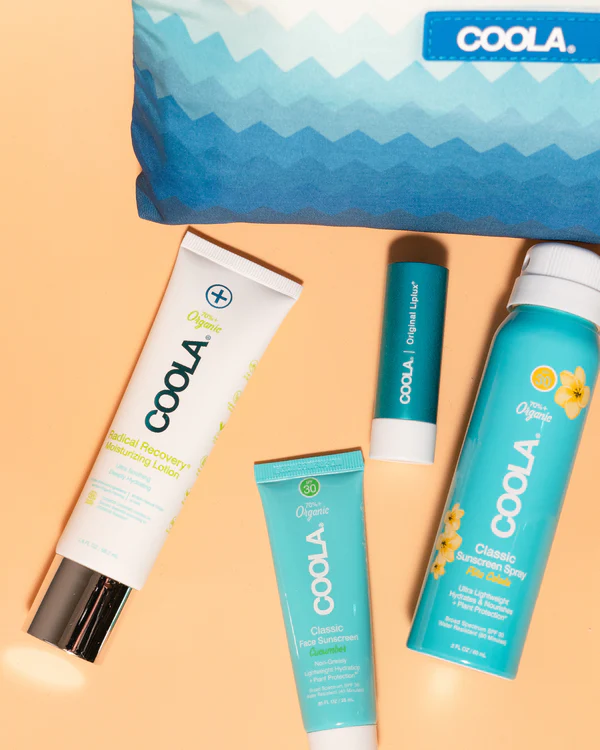Protecting your skin from the sun is crucial to prevent damage, premature aging, and the risk of skin cancer. Here’s how you can safeguard your skin effectively:
1. Use Sunscreen Daily
- Broad-Spectrum Sunscreen: Choose one that protects against both UVA and UVB rays.
- SPF 30 or Higher: Opt for SPF 30 or more, depending on your sun exposure.
- Water-Resistant: If swimming or sweating, use water-resistant sunscreen.
- Apply Generously: Use about a teaspoon for your face and a shot glass amount for your body.
- Reapply: Every two hours or after swimming, sweating, or toweling off.
WE RECOMMEND COOLA SUNSCREEN AS THE NUMBER ONE PROTECTANT.
2. Wear Protective Clothing
- Long-Sleeved Shirts and Pants: Light, breathable fabrics like cotton or linen are ideal.
- UPF Clothing: Invest in clothes with Ultraviolet Protection Factor (UPF).
- Wide-Brimmed Hats: Protect your face, neck, and ears.
- Sunglasses: Wear ones with 100% UV protection to shield your eyes and prevent crow’s feet.
3. Avoid Peak Sun Hours
- 10 AM to 4 PM: Sun rays are strongest during this time. Stay indoors or in the shade when possible.
4. Seek Shade
- Use umbrellas, canopies, or sit under trees when outdoors.
5. Be Cautious Around Reflective Surfaces
Water, sand, snow, and even glass can reflect UV rays and intensify exposure. Take extra precautions in these environments.
6. Avoid Tanning Beds
They emit harmful UV rays that can damage your skin just like natural sunlight.
7. Use Lip Balm with SPF
Protect your lips with a balm containing SPF 15 or higher.
8. Keep Skin Hydrated
Sun exposure can dehydrate your skin. Drink water and use moisturizers with antioxidants (e.g., Vitamin C or E) to repair and protect.
9. Check the UV Index
Before going outside, check the UV index in your area. High levels mean you need extra precautions.
10. Regular Skin Checks
Monitor your skin for changes, such as new moles or spots. See a dermatologist annually for a professional check.



